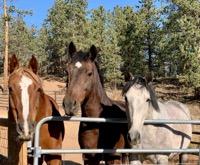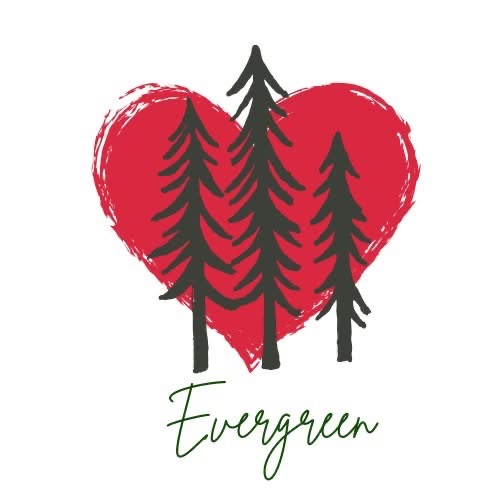- Posts: 14
- Thank you received: 0
To Stable or Not to Stable?
- Leticia German DVM
-
 Topic Author
Topic Author
- Tourist
-

Less
More
13 Jul 2010 20:26 #1
by Leticia German DVM
To Stable or Not to Stable? was created by Leticia German DVM
[imgleft:11dhojw6]
crazyhorseknowledge.com/sites/wanna/_fil...ing%20picture(2).jpg
[/imgleft:11dhojw6]
To Stable or Not to Stable?
Recently a client asked me about housing a horse primarily in a stall. It was a very interesting situation and brought up many issues. First off the basic outline of the situations is the horse spends a good deal of his time in a stall and then gets put outside in a small turnout pen on hard ground. He is a tall (>16 hands), young horse. The problem is that the horse is often lame and has swelling in his legs (stocked up).
The first part of this problem is to look at size of the animal compared to the size of the pen. Most stalls are about 10 feet to 12 feet square. This is plenty of room to stand, turn in a circle and most of the time lay down, although sometimes they do get stuck. This does not allow the horse to stretch, walk, run, play, or many other natural horse activities. Stalls are great for shelter from the weather, a place to rest, confinement during an injury and other basic uses. Sometimes a stall can even be a safe haven. But let’s think of ourselves in a similar situation. Imagine driving from Denver to Las Vegas (about 12 hours). How do you feel? confined? tired? stiff? sore? restless? bored? and many other things. Now imagine doing that day after day.
Routine exercise can be the cure for this. Turnout pens can also be a great solution to the boredom. It gives the horse a change of scenery, maybe some socialization and hopefully (if they are designed well) extra room to stretch his legs.
Horses are social animals that are designed as athletes and grazers. They need to move and exercise in order to maintain a healthy body as well as a healthy digestive system. The more regular the meals and activity gives the horse consistency in his life. The movement helps with blood circulation in the body as well as the intestines as well as helps move feed through the gut. Feeding multiple meals spreads out the amounts in each intestinal section rather than it being in one or two large lumps. The more this is consistent, along with adequate water intake; we reduce risk factors for colic.
Another added benefit of exercise and turnout can be stress reduction. Many horses get stressed and bored when confined. They then develop a variety of bad habits such as weaving, pawing, pacing and even the dreaded cribber. Stressed horses are also more prone to ulcers and other types of colic.
Improvement in circulation is another benefit. If you remember the horse in our case has swelling in his hind limbs. This is frequently the result of poor circulation in the limbs. If you have ever had your ankles swell after a long airplane trip or other event you have experienced this. The swelling often goes down with movement, although massage and a good Jacuzzi bath help (or hosing/soaking if a horsie hot tub is not available).
There is a balance with quantity versus quality in activity and always safety first. Controlled or supervised exercise can be great, so can free exercise. It is joyous to watch a horse at play in an arena or pasture. But depending on the situation we need to work up to this. Just like us they need to be conditioned into their fitness and sport. When was the last time you started a new workout program? Or didn’t stretch after a particularly hard workout? You were sore and limped. Right? Well animals are not very different and there are great stretching and muscle targeting exercises that you can do with your horse to help make him a better, longer lasting athlete. Exercise needs to be done on a frequent and routine basis. Being a weekend warrior often leads to pain and injury in the long run. So not only do we need to condition and train we need to make sure of safety.
As a veterinarian that works on horses I have a certain amount of job security as they are rather accident prone. There are many horses that can find a way to injure themselves in a padded stall. It is important to make sure that fences, footing, gates, water supplies, hay quality, and many other aspects of their environment are good and safe. However, at some point we have to trust in faith that things will be okay. I am the first to be guilty of over worrying and trying to protect, but at some point I just have to let her run.
Bottom line in all things moderation!
20% off wellness evalutaions and physical conditioning plans in July.
Leticia German, DVM
Leticia German grew up in Montana around a vast array of animals. She came to Colorado in 1997 to pursue an education in veterinary medicine. Leticia attended CSU for Veterinary Medicine and holds a Bachelor degree in Animal Science and a Masters in Animal Nutrition. After receiving her DVM, Leticia worked for a time in California before returning home to Colorado. Leticia worked in the area for the last 3 years at a local clinic before venturing out on her own, with her business Front Range Equine & Livestock. She recently completed an extensive training course and is a Certified Veterinary Acupuncturist.
Dr. Leticia treats a wide variety of large and small animal species and her practice offers comprehensive, integrative care including acupuncture, soft tissue and trigger point therapy, rehabilitation plans, and nutrition consulting. She also provides general health services including vaccines, dental care, blood work, and preventative health care and makes house and farm calls for your convenience.
In addition to her passion for animal health, Leticia is a gourmet food hobbyist, and enjoys travel and fiber arts such as spinning, knitting and crochet. Leticia’s personal pet family consists of two cats, a dog and a Morgan mare that is her great joy. Leticia has spent many years training and bonding with her mare from the beginning stages and understands the great human animal bond regardless of species.
To Stable or Not to Stable?
Recently a client asked me about housing a horse primarily in a stall. It was a very interesting situation and brought up many issues. First off the basic outline of the situations is the horse spends a good deal of his time in a stall and then gets put outside in a small turnout pen on hard ground. He is a tall (>16 hands), young horse. The problem is that the horse is often lame and has swelling in his legs (stocked up).
The first part of this problem is to look at size of the animal compared to the size of the pen. Most stalls are about 10 feet to 12 feet square. This is plenty of room to stand, turn in a circle and most of the time lay down, although sometimes they do get stuck. This does not allow the horse to stretch, walk, run, play, or many other natural horse activities. Stalls are great for shelter from the weather, a place to rest, confinement during an injury and other basic uses. Sometimes a stall can even be a safe haven. But let’s think of ourselves in a similar situation. Imagine driving from Denver to Las Vegas (about 12 hours). How do you feel? confined? tired? stiff? sore? restless? bored? and many other things. Now imagine doing that day after day.
Routine exercise can be the cure for this. Turnout pens can also be a great solution to the boredom. It gives the horse a change of scenery, maybe some socialization and hopefully (if they are designed well) extra room to stretch his legs.
Horses are social animals that are designed as athletes and grazers. They need to move and exercise in order to maintain a healthy body as well as a healthy digestive system. The more regular the meals and activity gives the horse consistency in his life. The movement helps with blood circulation in the body as well as the intestines as well as helps move feed through the gut. Feeding multiple meals spreads out the amounts in each intestinal section rather than it being in one or two large lumps. The more this is consistent, along with adequate water intake; we reduce risk factors for colic.
Another added benefit of exercise and turnout can be stress reduction. Many horses get stressed and bored when confined. They then develop a variety of bad habits such as weaving, pawing, pacing and even the dreaded cribber. Stressed horses are also more prone to ulcers and other types of colic.
Improvement in circulation is another benefit. If you remember the horse in our case has swelling in his hind limbs. This is frequently the result of poor circulation in the limbs. If you have ever had your ankles swell after a long airplane trip or other event you have experienced this. The swelling often goes down with movement, although massage and a good Jacuzzi bath help (or hosing/soaking if a horsie hot tub is not available).
There is a balance with quantity versus quality in activity and always safety first. Controlled or supervised exercise can be great, so can free exercise. It is joyous to watch a horse at play in an arena or pasture. But depending on the situation we need to work up to this. Just like us they need to be conditioned into their fitness and sport. When was the last time you started a new workout program? Or didn’t stretch after a particularly hard workout? You were sore and limped. Right? Well animals are not very different and there are great stretching and muscle targeting exercises that you can do with your horse to help make him a better, longer lasting athlete. Exercise needs to be done on a frequent and routine basis. Being a weekend warrior often leads to pain and injury in the long run. So not only do we need to condition and train we need to make sure of safety.
As a veterinarian that works on horses I have a certain amount of job security as they are rather accident prone. There are many horses that can find a way to injure themselves in a padded stall. It is important to make sure that fences, footing, gates, water supplies, hay quality, and many other aspects of their environment are good and safe. However, at some point we have to trust in faith that things will be okay. I am the first to be guilty of over worrying and trying to protect, but at some point I just have to let her run.
Bottom line in all things moderation!
20% off wellness evalutaions and physical conditioning plans in July.
Leticia German, DVM
Leticia German grew up in Montana around a vast array of animals. She came to Colorado in 1997 to pursue an education in veterinary medicine. Leticia attended CSU for Veterinary Medicine and holds a Bachelor degree in Animal Science and a Masters in Animal Nutrition. After receiving her DVM, Leticia worked for a time in California before returning home to Colorado. Leticia worked in the area for the last 3 years at a local clinic before venturing out on her own, with her business Front Range Equine & Livestock. She recently completed an extensive training course and is a Certified Veterinary Acupuncturist.
Dr. Leticia treats a wide variety of large and small animal species and her practice offers comprehensive, integrative care including acupuncture, soft tissue and trigger point therapy, rehabilitation plans, and nutrition consulting. She also provides general health services including vaccines, dental care, blood work, and preventative health care and makes house and farm calls for your convenience.
In addition to her passion for animal health, Leticia is a gourmet food hobbyist, and enjoys travel and fiber arts such as spinning, knitting and crochet. Leticia’s personal pet family consists of two cats, a dog and a Morgan mare that is her great joy. Leticia has spent many years training and bonding with her mare from the beginning stages and understands the great human animal bond regardless of species.
Please Log in or Create an account to join the conversation.
- DavisRanch
-

- Leaf Peeper
-

16 Jul 2010 08:45 #2
by DavisRanch
Replied by DavisRanch on topic To Stable or Not to Stable?
Great post, thanks! I couldn't agree more. I think many times, owners project what they would like and find comfortable onto their horses. The people would like to sleep inside, so they assume their horse would too. Not the case generally, especially when one understands that horses are not cave dwellers and do not sleep for 8 hours a night. Movement is critical to horses as is a social environment. They do like to have shelter and do know when to go into it.
I have a question on a related but slightly differnent topic. Can you discuss 'wobbles' or 'wobbler syndrome', especially in regards to a young, three-year old AQHA who is 16.1, was fed a grass/alfalfa mix hay (maybe 20% alfalfa), Purina Equine Junior and other supplements, lives in a stall 15-16 hours per day with turnout on a hard surface. He is turned out into a sand arena 3-5 times per week and allowed to run, then is intermittently lame following these exercise sessions. The lameness travels around to a different leg each lameness. This horse was recently diagnosed (through radiographs) as having a slight impingement at C5-C6 and it is suspected that he is suffering from wobbler syndrome. However, the diagnoses is not conclusive since he not fail each of the tests the veterinarian performed. Do you have any information regarding this ailment in a young horse? Have you seen improvement over time and with change in current living conditions? Do you have any thoughts on the subject that I might not know how to ask?
I thank you very much for your time and for responding. Just trying to gather as much info as I can for this guy and hoping there is hope for him!
Thank you again,
Tanya Buck
I have a question on a related but slightly differnent topic. Can you discuss 'wobbles' or 'wobbler syndrome', especially in regards to a young, three-year old AQHA who is 16.1, was fed a grass/alfalfa mix hay (maybe 20% alfalfa), Purina Equine Junior and other supplements, lives in a stall 15-16 hours per day with turnout on a hard surface. He is turned out into a sand arena 3-5 times per week and allowed to run, then is intermittently lame following these exercise sessions. The lameness travels around to a different leg each lameness. This horse was recently diagnosed (through radiographs) as having a slight impingement at C5-C6 and it is suspected that he is suffering from wobbler syndrome. However, the diagnoses is not conclusive since he not fail each of the tests the veterinarian performed. Do you have any information regarding this ailment in a young horse? Have you seen improvement over time and with change in current living conditions? Do you have any thoughts on the subject that I might not know how to ask?
I thank you very much for your time and for responding. Just trying to gather as much info as I can for this guy and hoping there is hope for him!
Thank you again,
Tanya Buck
Please Log in or Create an account to join the conversation.
Time to create page: 0.132 seconds






